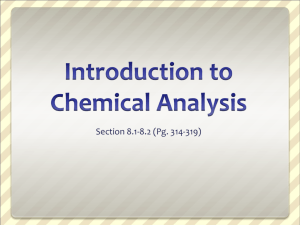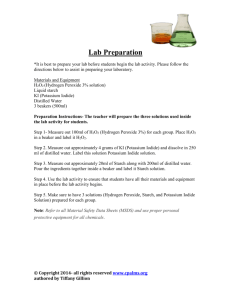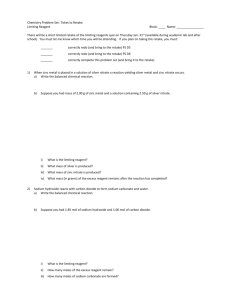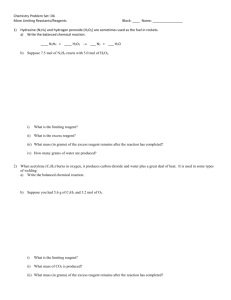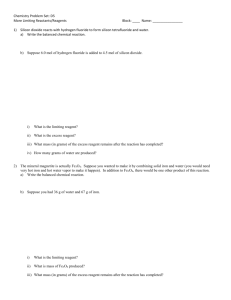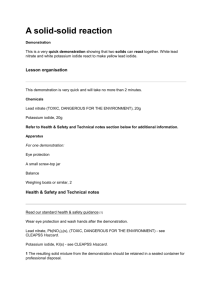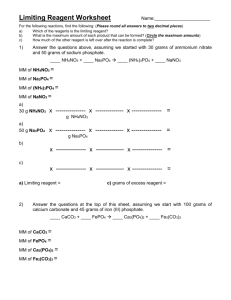Limiting Reagent Lab
advertisement
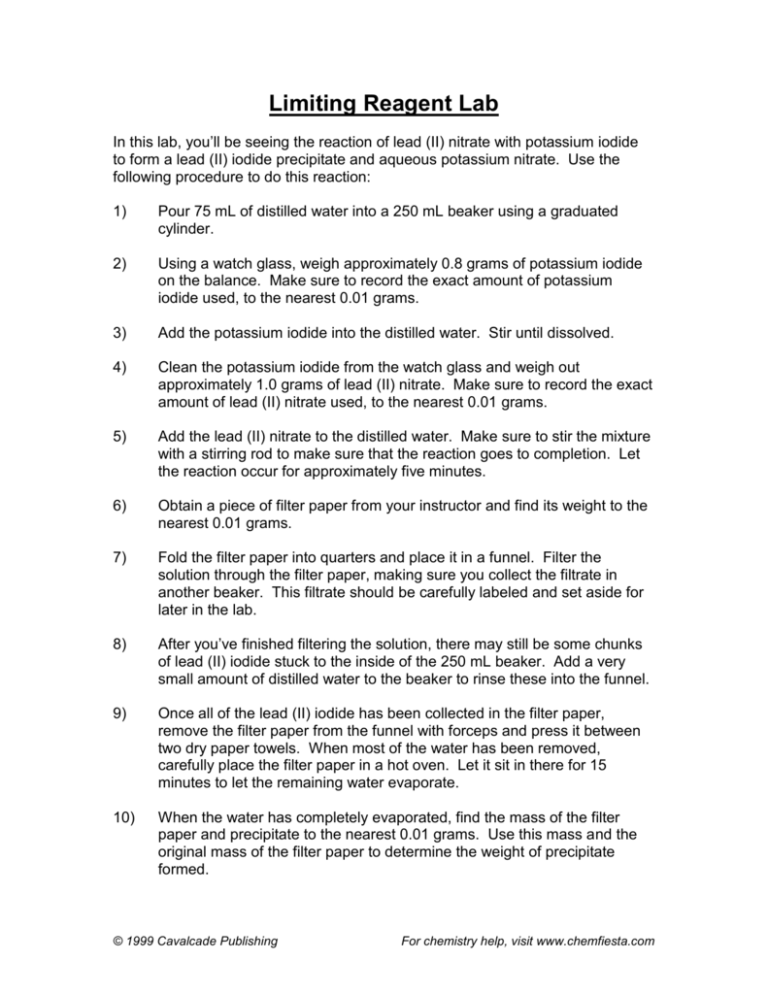
Limiting Reagent Lab In this lab, you’ll be seeing the reaction of lead (II) nitrate with potassium iodide to form a lead (II) iodide precipitate and aqueous potassium nitrate. Use the following procedure to do this reaction: 1) Pour 75 mL of distilled water into a 250 mL beaker using a graduated cylinder. 2) Using a watch glass, weigh approximately 0.8 grams of potassium iodide on the balance. Make sure to record the exact amount of potassium iodide used, to the nearest 0.01 grams. 3) Add the potassium iodide into the distilled water. Stir until dissolved. 4) Clean the potassium iodide from the watch glass and weigh out approximately 1.0 grams of lead (II) nitrate. Make sure to record the exact amount of lead (II) nitrate used, to the nearest 0.01 grams. 5) Add the lead (II) nitrate to the distilled water. Make sure to stir the mixture with a stirring rod to make sure that the reaction goes to completion. Let the reaction occur for approximately five minutes. 6) Obtain a piece of filter paper from your instructor and find its weight to the nearest 0.01 grams. 7) Fold the filter paper into quarters and place it in a funnel. Filter the solution through the filter paper, making sure you collect the filtrate in another beaker. This filtrate should be carefully labeled and set aside for later in the lab. 8) After you’ve finished filtering the solution, there may still be some chunks of lead (II) iodide stuck to the inside of the 250 mL beaker. Add a very small amount of distilled water to the beaker to rinse these into the funnel. 9) Once all of the lead (II) iodide has been collected in the filter paper, remove the filter paper from the funnel with forceps and press it between two dry paper towels. When most of the water has been removed, carefully place the filter paper in a hot oven. Let it sit in there for 15 minutes to let the remaining water evaporate. 10) When the water has completely evaporated, find the mass of the filter paper and precipitate to the nearest 0.01 grams. Use this mass and the original mass of the filter paper to determine the weight of precipitate formed. © 1999 Cavalcade Publishing For chemistry help, visit www.chemfiesta.com In this reaction, one of the reagents was a limiting reagent. Using your knowledge of chemical equations and limiting reagents, determine which was the limiting reagent for this experiment. When you determine the identity of the limiting reagent and nonlimiting reagent, determine the percent yield of lead (II) iodide formed. Part Two: Determining the amount of nonlimiting reagent left over Hopefully, you’ve saved the leftover solution from the initial reaction you did. This solution contains the nonlimiting reagent from the first part of this lab. Using your knowledge of limiting reagents and this chemical reaction, devise an experiment to measure the amount of nonlimiting reagent left over after this reaction. If your method requires heat, use a hotplate at medium temperature instead of a Bunsen burner. When you’ve determined the amount of the nonlimiting reagent left over, you should do the following: 1) Determine the percent yield of the nonlimiting reagent. 2) Explain why your yield was not exactly 100% 3) Devise improvements to your laboratory procedure/methods that would give you better results were you to do this experiment again. © 1999 Cavalcade Publishing For chemistry help, visit www.chemfiesta.com


